Palm Oasis and Red Bread at Al Absaa, Saudi Arabia
by Brad Lancaster
www.HarvestingRainwater.com
Number 3 in a series of Drops in a Bucket blog entries on Brad Lancaster’s and David Eisenberg’s U.S. State Department-sponsored adventures and gleanings in the Middle East
Al Absaa, Saudi Arabia, April 2009
At Al Absaa we toured irrigation projects within the largest oasis in Saudi Arabia. Over one million date palms grow here. But the springs that have fed the oasis for generations are going dry. Oil drilling by Aramco has diverted, blocked, or consumed water flows that used to feed the oasis. The city of 1.5 million is also rapidly growing and consuming additional water. This is a story I encounter again and again the world over; this time it just happens to be in Saudi Arabia.
To keep the oasis and the agriculture watered, 75,000 cubic meters of treated sewage per day are directed to the fields. There are 1,500 kilometers of irrigation canals. Every year, 45 kilometers of these canals are converted to sealed or covered canals. Farmers that flood-irrigate get 3 Saudi riyals (one SR equals about US$0.27) per kilogram of their dates. Those that use drip irrigation get 5 SR/kg. Eighty million riyals is being spent to purify irrigation drainage and sewage, which is then blended with spring water from 32 natural springs before being directed into the irrigation system. The sewage from a city 140 km away will also be directed to the oasis by 2010. Nonetheless, the water table continues to drop.
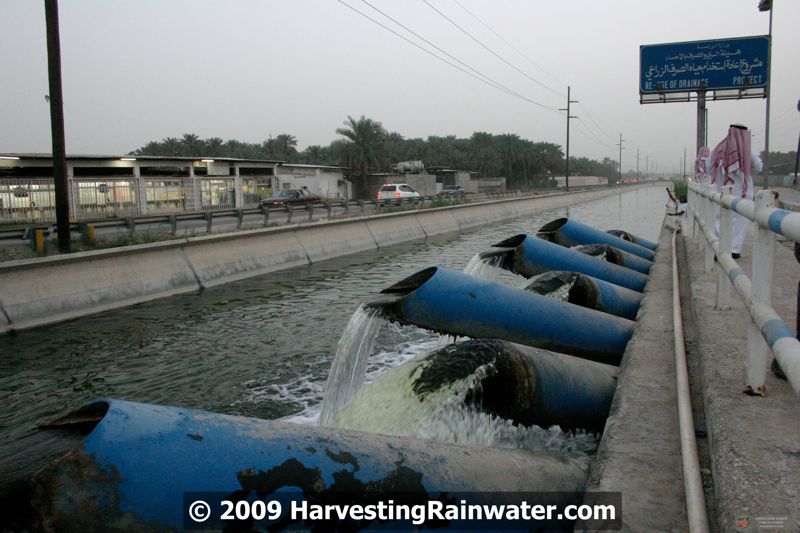
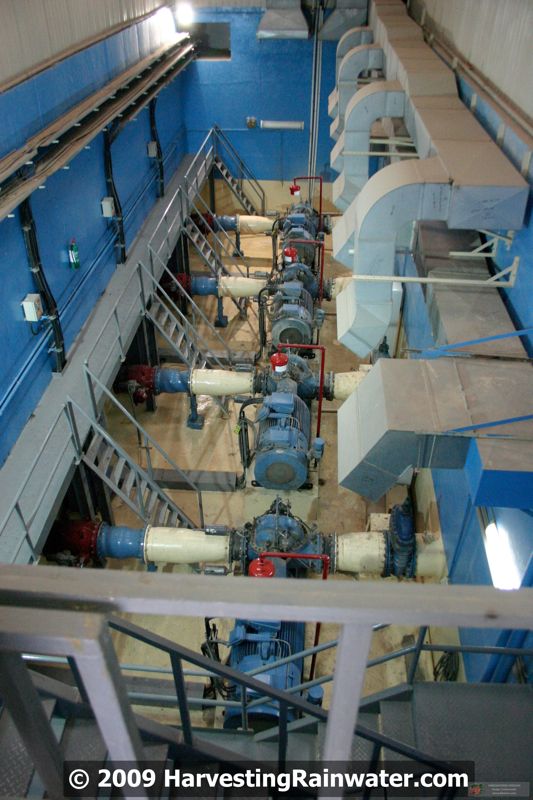
One spring, “The Mother of Seven (Streams),” is now the mother of none. Twenty years ago it stopped flowing on its own. Water must now be pumped. We looked down into the deep hole from which the spring water used to flow. The hole was dripping, but empty.
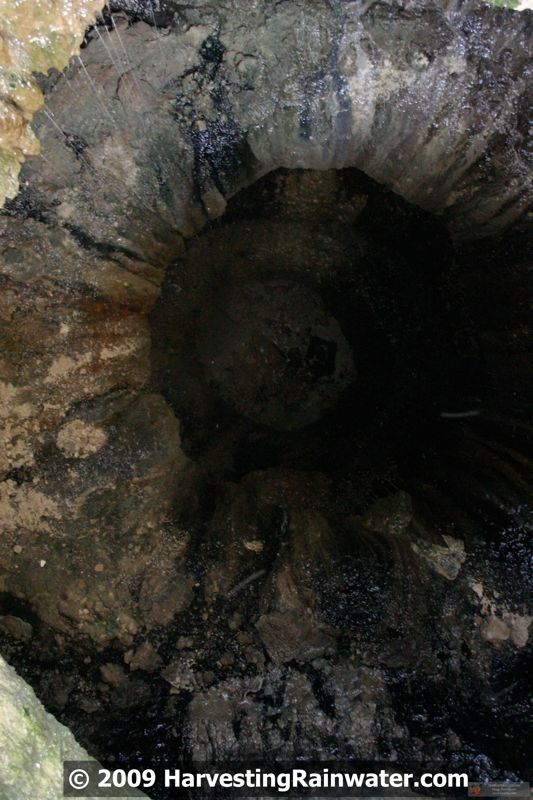
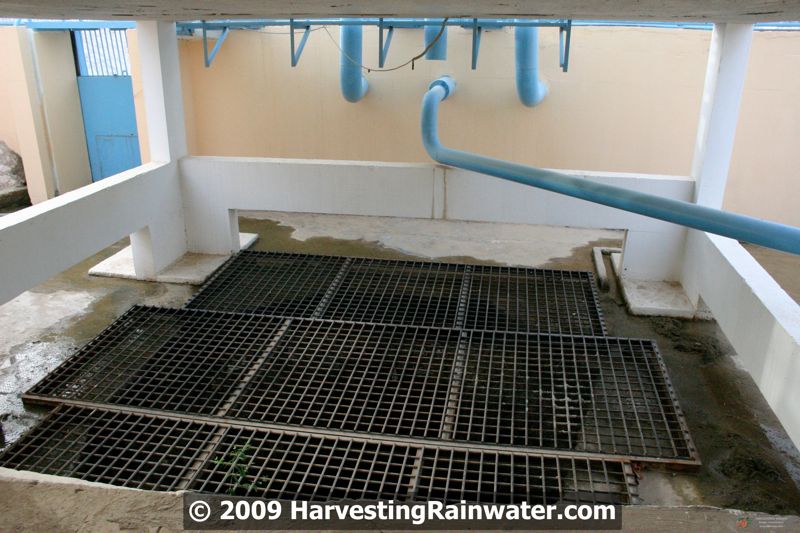
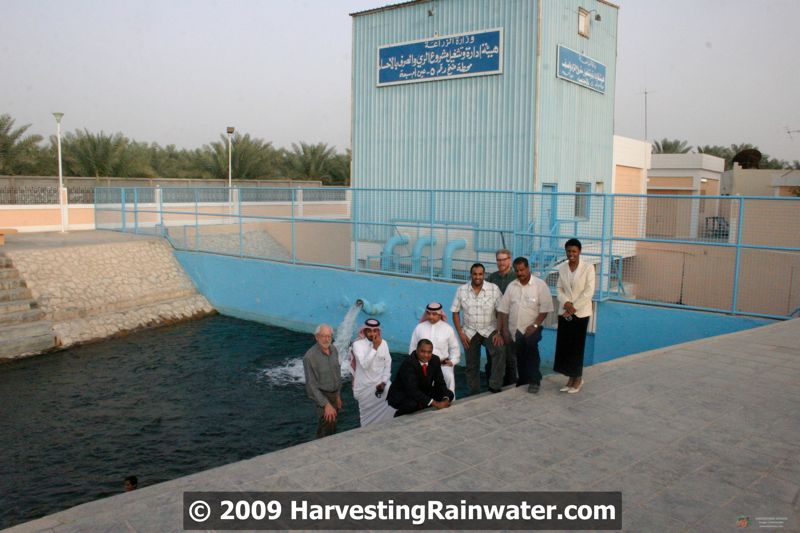
A father and son were swimming in a pool fed by the spring’s pumps. The father told me that the water used to be warmer, that he always swam here as a boy, and was glad his son could do likewise. I wondered if there would be water here for his grandson to swim in.
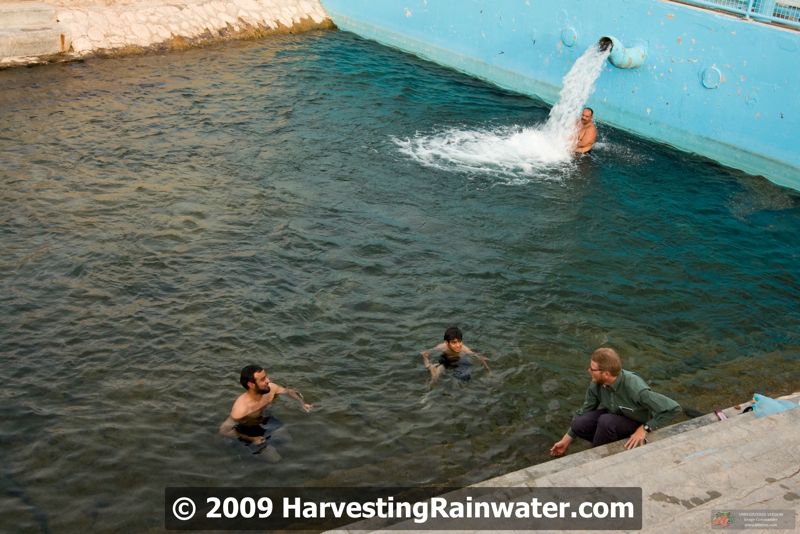
The oil drilling, along with the rapid growth and consumption made possible by cheap oil, are killing the oasis. In a way, for the short-term, the cheap oil is also extending the life of the oasis by powering pumping and treatment. But this life extension is completely oil-dependent, and there are many problems with pollution caused by the oil consumption. The oasis thrived for hundreds of years requiring no pumps, no power. The water was readily accessible. When the oil runs out, it may be that no one will be able to access the water because there will be no power to run the pumps. Though if the excessive pumping stops, maybe, very slowly, the ground water will eventually rise again.
While, the Saudi efforts to save or at least extend the life of the oasis are very impressive, I couldn’t help but think that more resources should be invested in restoring (and preventing further destruction of) the natural system, rather than just the mechanical.
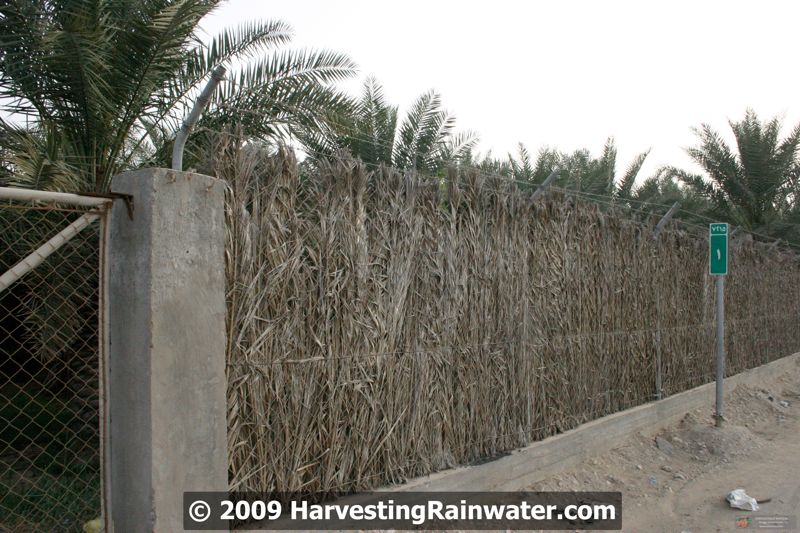
After touring the irrigation system, our enthusiastic, ever-gracious guide Ibrahim lead us to one of the many highlights of the trip – Red Bread or Hasawi bread.
On the front porch of an old roadside shop sat the rotund baker. When we arrived he went to work slapping 12-inch-wide flatbreads up against the inside of a wood-fired oven shaped like an olla. The bread stuck to the side of the oven and when removed was absolutely delicious. It was spiced with dates and fennel — I was in heaven. Not just because of the incredible food, but because this place was old and felt rooted and real. The dates were from just outside the shop. No new, modern glitz. Just great local food. I dreamed that if I were living here, I’d be a daily regular and maybe even an apprentice.
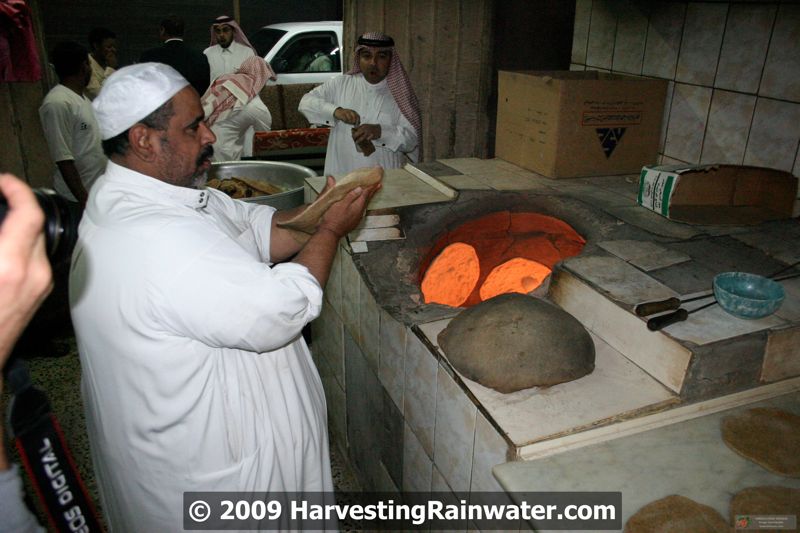
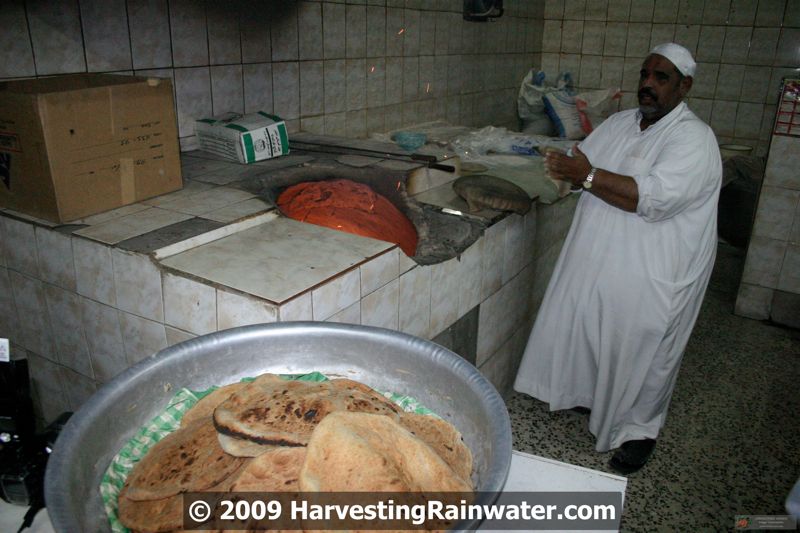
See the books Rainwater Harvesting for Drylands and Beyond for strategies that help restore natural water systems.
And see the Drops in the Bucket Blog at www.HarvestingRainwater.com for more dispatches from the Middle East and beyond.
See the new, full-color, revised editions of Brad’s award-winning books
– available a deep discount, direct from Brad:

Volume 1

